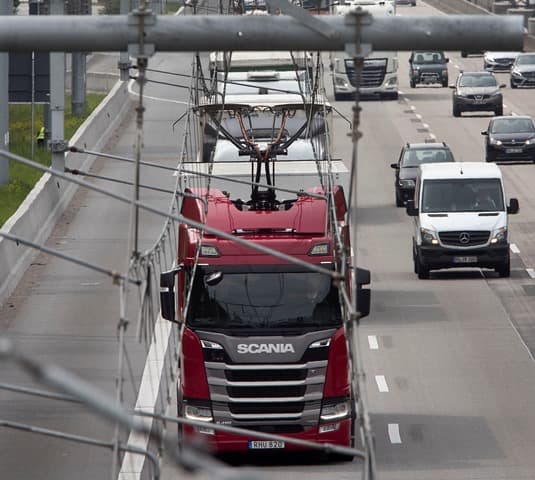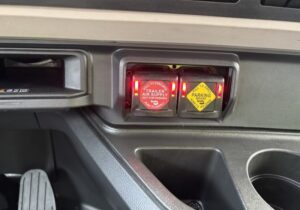Way back in 1982, Eddy Grant encouraged us all to “rock down to Electric Avenue.”
In more recent times, the trucking industry has increasingly set itself on the road to a more electric future, with battery life being one of the main technological hindrances, especially since charging stations are still few and far between.
Germany has moved forward with its own version of Electric Avenue with the development of an eHighway system by which trucks can draw electricity from overhead cables. On May 7, the the German government introduced the system on a roughly 6-mile stretch of the Autobahn near Frankfurt, between the city’s airport and a nearby industrial park.
This is the first test of the system, which has been in development since 2010, on a public highway in Germany. Smaller-scale tests have been done in Stockholm, Sweden, in 2016 and in Carson, California, near the Port of Los Angeles, in 2017.
Currently, one truck is operating on the system, with four more trucks expected to join it by 2020. The eHighway system is also being installed in two other locations, as well, and will be tested through 2022. The German government will decide whether to expand the system.
To get this far, Germany has spent just under $15.7 million on installing the system and invested another $77 million in designing the hybrid trucks that will use it.
The system was designed by Munich-based Siemens AG, is somewhat similar to overhead electric systems used with trains and cable cars. The hybrid trucks were built by Volkswagen AG’s Scania truck division.
The trucks are fitted with conductor rods, called pantographs, on the top of the cabin. Sensors detect when the overhead wires are available, and the pantographs are then extended upward. The truck must be traveling at 90 kilometers per hour (56 mph) or less for the connection to be made.
Once connected, the truck draws from the 670-volt direct-current cables, and the truck runs entirely on electricity. Meanwhile, the truck’s batteries are recharged so that once disconnected, the truck can continue to run on electricity before switching over to diesel.
Siemens has estimated that a truck owner could save $22,370 on fuel for every 100,000 kilometers (62,137 miles) driven. The big motivator for the German government, however, is its potential environmental impact by reducing CO2 and other emissions.
Slashing carbon emissions from transportation is a key part of the 2015 Paris Climate Agreement. Truck transportation, meanwhile, is the world’s fastest growing source of oil demand, according to the International Transport Forum. Road transportation of goods is projected to account for 15% of the increase in global CO2 emissions until 2050.
Germany has set goals to cut greenhouse-gas emissions by 40% by 2020, compared with 1990 levels, and up to 95% by 2050.
The Trucker News Staff produces engaging content for not only TheTrucker.com, but also The Trucker Newspaper, which has been serving the trucking industry for more than 30 years. With a focus on drivers, the Trucker News Staff aims to provide relevant, objective content pertaining to the trucking segment of the transportation industry. The Trucker News Staff is based in Little Rock, Arkansas.















